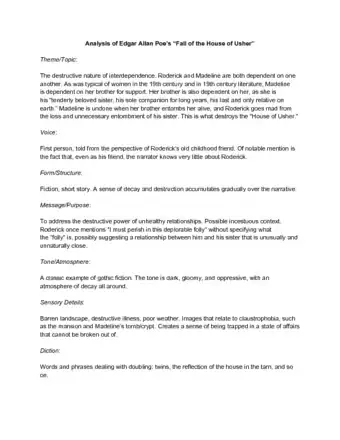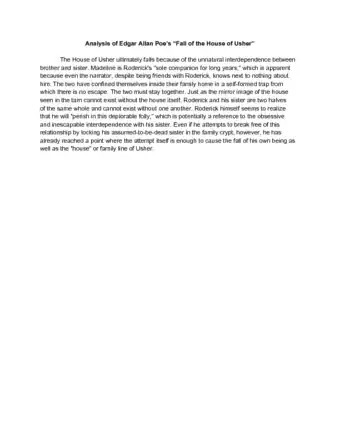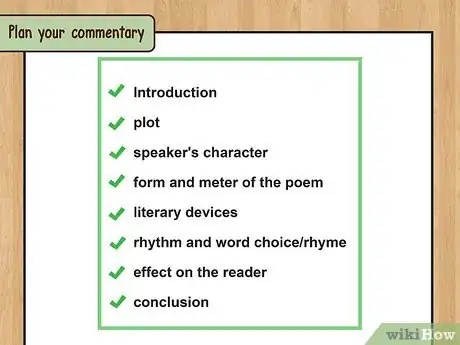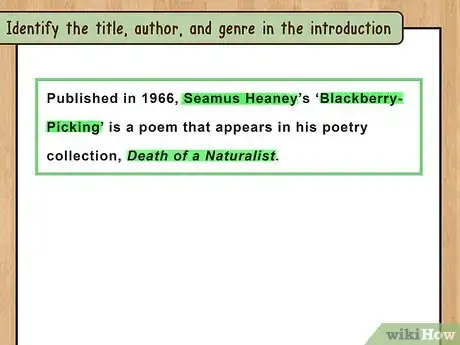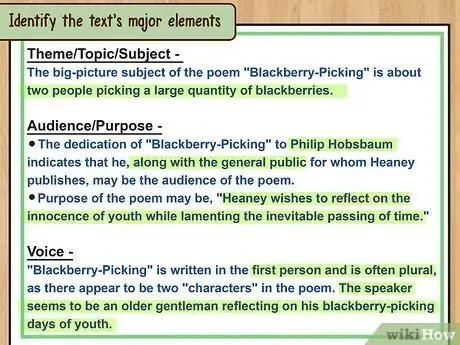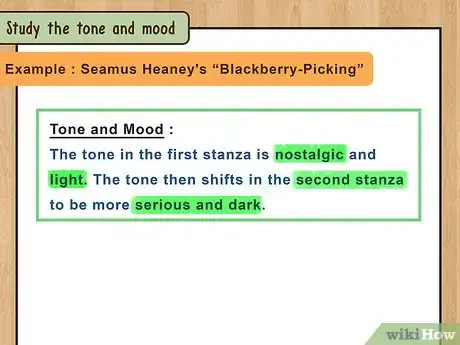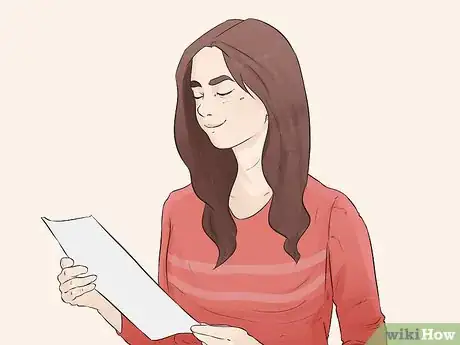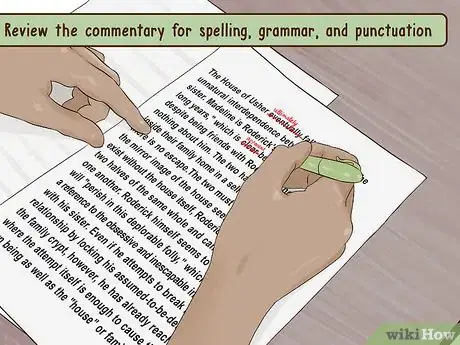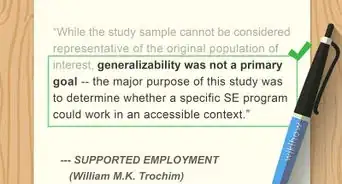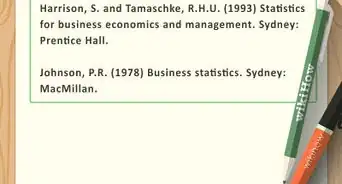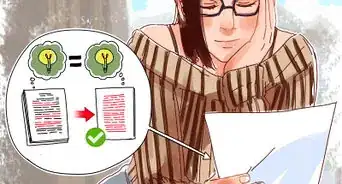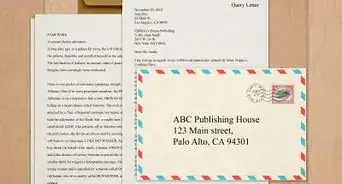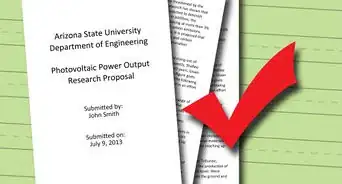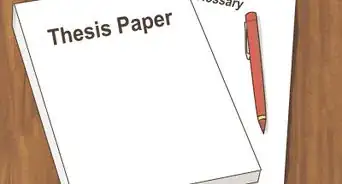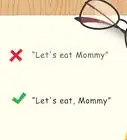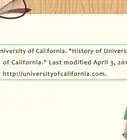This article was co-authored by Stephanie Wong Ken, MFA. Stephanie Wong Ken is a writer based in Canada. Stephanie's writing has appeared in Joyland, Catapult, Pithead Chapel, Cosmonaut's Avenue, and other publications. She holds an MFA in Fiction and Creative Writing from Portland State University.
wikiHow marks an article as reader-approved once it receives enough positive feedback. In this case, 85% of readers who voted found the article helpful, earning it our reader-approved status.
This article has been viewed 686,795 times.
A literary commentary is a detailed analysis of a passage of text, focusing specifically on the text itself. It should not be confused with a literary analysis essay, as it does not need a thesis statement or a general discussion of the book as a whole. Instead, the literary commentary should only analyze and reflect on a specific passage. To write a literary commentary, start by reading the text and creating an outline. Then, dive right into a detailed discussion of the text. Make sure you polish the literary commentary for style, grammar, and spelling before handing it in so it is at its best.
Steps
Literary Commentary Help
Starting the Literary Commentary
-
1Read the passage several times. Start by reading the passage once out loud to yourself and once in your head. Take the time to read each word and each sentence slowly. This will help you get in the mindset of analyzing the text and ensure you understand each detail of the text.
- Make sure you have a hard copy of the passage so you can mark it up as you read it. Jot down any initial thoughts or questions you may have about the text as you read it several times.
-
2Highlight keywords in the text. Take a pen, pencil, or highlighter and mark any words that feel important in the text. Look for words that are bolded or italicized in the text, as this likely means they are important for the author and key to understanding the text. You may also highlight words that you do not understand or have questions about. You can then discuss these terms in your literary commentary.
- You should also look for words that are repeated in the text, as this means they are likely important. Notice if the same word is used in a different context in the passage and highlight each mention of the word.
Advertisement -
3Create an outline. Literary commentaries follow a very simple outline and unlike an essay, do not require a thesis statement. Instead, you should analyze the structure, content, and form of the provided text in detail. The outline should look like:
- Introduction section: Identify the text
- Body section: Discuss the main features of the text
- Conclusion section: Summarize your thoughts on the text
Writing the Literary Commentary
-
1Identify the title, author, and genre in the introduction. Begin the literary commentary by noting the basic details of the text. State the title, author, date of publication, and genre of the text. This should appear in your introduction section. You can also mention at what point in a larger work the passage occurs, if relevant.
- For example, you may note, “Published in 1966, Seamus Heaney’s ‘Blackberry-Picking’ is a poem that appears in his poetry collection, Death of a Naturalist.”
- If the text is from a larger work, do not write about the overall plot of the larger work. You should also not include details from the author’s biography or the historical period when the text was written, unless it feels relevant to the passage.
-
2Discuss the text’s subject, themes, and audience. In the body paragraphs, think about what the text is about. Who or what is the text focusing on? What are the main ideas in the text? What is the overall purpose of the text? Who is the text written for?[1]
- For example, in Seamus Heaney's poem, "Blackberry-Picking,” the subject is two people picking a large quantity of blackberries.[2]
- The themes of the poem could be nature, hunger, and decay or rot.
- The poem begins with a dedication to “Philip Hobsbaum,” which means he could be the intended audience of the poem, the “you” addressed in the poem.
-
3Look at the genre, form, and structure of the text. The genre of the text is tied to its form, or how it appears on the page. Is the text a poem, a piece of prose, or an essay? Does the text fit in a specific genre, such as fiction, nonfiction, poetry, travel writing, or memoir?[3]
- The genre and form of the text will also help you determine the structure of the text. For example, Seamus Heaney's "Blackberry-Picking” takes the form of a poem and fits in the genre of poetry. It uses a familiar poetic structure, such as short lines of text and is broken into two stanzas.
-
4Analyze the voice in the text. Ask yourself, who is speaking in the text? Identify the speaker or narrator in the text. Then, think about how the voice of the text is reflected in the word choice, the language, and the diction in the text.
- For example, in Seamus Heaney's "Blackberry-Picking,” the speaker uses the first person voice. The speaker then addresses a “you” in the text, indicating there are two characters in the poem.
-
5Study the tone and mood. The tone of the text is how the author expresses their attitude in the writing. The tone may shift or change throughout the text, such as moving from a light-hearted tone to a serious tone or from a friendly tone to a sinister tone. It is usually expressed through the diction, the point of view, and the word choice in the text. The tone also reflects the mood of the text. The mood is the atmosphere of the text, or how the text makes you feel as you experience it.
- For example, in Seamus Heaney's "Blackberry-Picking,” the tone in the first stanza is nostalgic and light. The tone then shifts in the second stanza to be more serious and dark.
-
6Identify the literary devices in the text. Literary devices like metaphor, simile, imagery, and alliteration are often used in writing to deepen the meaning of the text. If you notice any literary devices in the text, discuss them in the literary commentary. Name the literary devices and use them to discuss key ideas or themes in the passage.[4]
- For example, if you are discussing Seamus Heaney's "Blackberry-Picking,” you may look at a simile like “You ate that first one and its flesh was sweet/Like thickened wine: summer's blood was in it.” Or you may discuss imagery like “a rat-grey fungus” or “fruit fermented.”
- You can find a complete list of literary devices in literature online.[5]
-
7Include quotes from the text. Support your discussion of the text by quoting lines or sentences in the passage. Use quotation marks to note when you are quoting the text directly. Only include quotes that will support your discussion of the text.
- For example, if you are discussing themes of decay in Seamus Heaney's "Blackberry-Picking,” you may quote a line like “I always felt like crying./It wasn't fair/That all the lovely canfuls smelt of rot.”
-
8Wrap up the commentary with a summary of your thoughts. End the literary commentary with a brief conclusion that reinforces your main points about the text. Discuss the relevance of the passage within the larger work. Restate your main ideas about the text but do not add new information or new thoughts in the conclusion.
- For example, you may end your literary commentary on Seamus Heaney's "Blackberry-Picking” by noting how the poem fits into the poetry collection and reflects common themes in Heaney’s work.
Polishing the Literary Commentary
-
1Read the commentary aloud to yourself. Once you have completed a draft of the literary commentary, read it back to yourself aloud. Listen for any sentences that sound awkward or long winded. Revise any confusing or convoluted phrases. Make sure each sentence is clear and easy to understand.[6]
- You can also read the commentary aloud to someone else to get their feedback. Ask a peer, a friend, or a family member to listen to you read the commentary and then ask for their feedback.
-
2Confirm the commentary follows a clear outline. To do this, you can try making a reverse outline using the commentary as a guide. Make sure the commentary has a clear introduction section, body paragraphs, and a conclusion section. Confirm it follows your original outline.
- You can go through the commentary and write down “introduction” or “discussion of text” next to the relevant paragraphs in the commentary. Doing this will ensure you cover all the necessary information in the commentary.
-
3Review the commentary for spelling, grammar, and punctuation. Try reading the commentary backwards, focusing on each word to ensure it is spelled correctly. Circle the punctuation marks in the commentary and ensure you use them correctly, such as a period at the end of every sentence or a comma between words, when needed.[7]
- If you are using a computer to write the literary commentary, you can use the spellcheck option in the computer program. However, you should not rely on spellcheck only to go through your work. Make sure you also do a close review of the commentary for any errors before you hand it in.
Community Q&A
-
QuestionWhat is the difference between a commentary and an essay?
 Community AnswerA commentary includes opinions or explanations about a subject. For example, you may be given a passage and told to confidently share your thoughts on how the writer expresses his theme using literary devices. On the other hand, an essay is a short piece of writing on a particular subject in which you do not share your own personal thoughts, only facts gathered through research.
Community AnswerA commentary includes opinions or explanations about a subject. For example, you may be given a passage and told to confidently share your thoughts on how the writer expresses his theme using literary devices. On the other hand, an essay is a short piece of writing on a particular subject in which you do not share your own personal thoughts, only facts gathered through research. -
QuestionWhat are the basic steps for writing commentary about video games?
 Community AnswerComment on the overall quality of the game (it helps to give it a rating), discuss the story line, graphics, performance, sound and visuals, etc. Is it fun, addictive, too hard/easy?
Community AnswerComment on the overall quality of the game (it helps to give it a rating), discuss the story line, graphics, performance, sound and visuals, etc. Is it fun, addictive, too hard/easy? -
QuestionShould I use the first or third person point of view?
 Community AnswerOne should write in first person point of view, as the reader wants your experience and thoughts of the passage that was given to you.
Community AnswerOne should write in first person point of view, as the reader wants your experience and thoughts of the passage that was given to you.
References
- ↑ https://warwick.ac.uk/fac/arts/modernlanguages/intranet/undergraduate/skills/commesswriting/commentarywriting/
- ↑ https://www.poetryfoundation.org/poems/50981/blackberry-picking
- ↑ https://warwick.ac.uk/fac/arts/modernlanguages/intranet/undergraduate/skills/commesswriting/commentarywriting/
- ↑ https://warwick.ac.uk/fac/arts/modernlanguages/intranet/undergraduate/skills/commesswriting/commentarywriting/
- ↑ http://literary-devices.com/
- ↑ https://writingcenter.unc.edu/tips-and-tools/reading-aloud/
- ↑ https://writingcenter.unc.edu/tips-and-tools/editing-and-proofreading/
About This Article
To write a literary commentary, begin by closely reading the text at least twice while paying attention to the content and structure. While commentaries do not need a thesis statement, you should identify the title, author, and genre in your introduction. In your body paragraphs, discuss the text’s subject, themes, and audience while pointing out any literary devices, like metaphors or symbols, that you notice. Use quotes to illustrate your points and conclude with a summary of your thoughts on the text. For advice about how to read and annotate your text from our Writer reviewer, scroll down.
